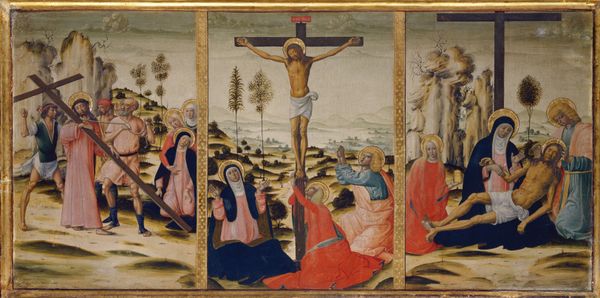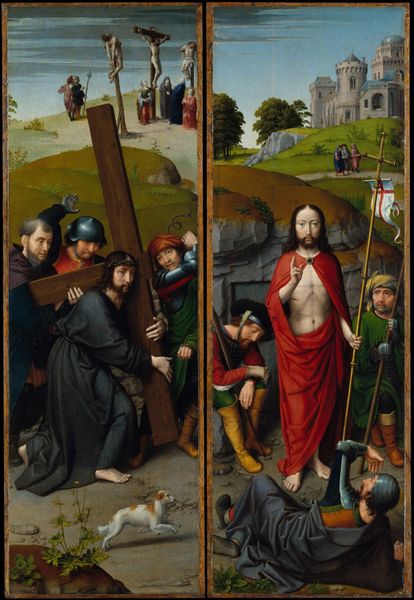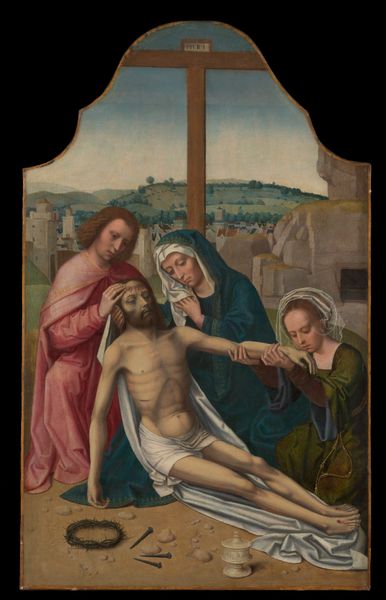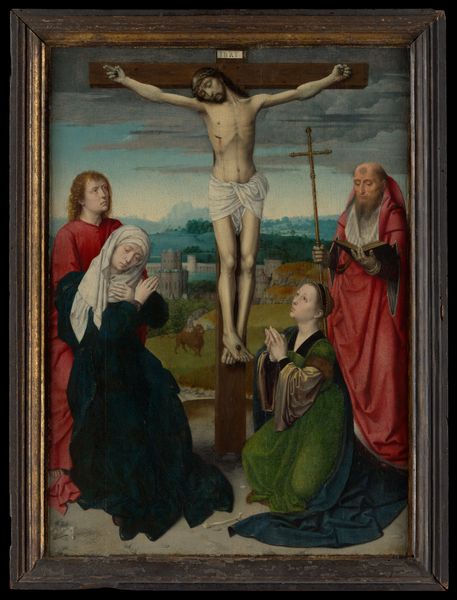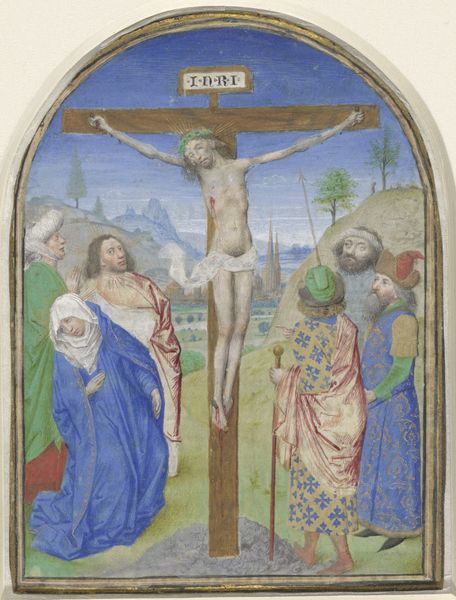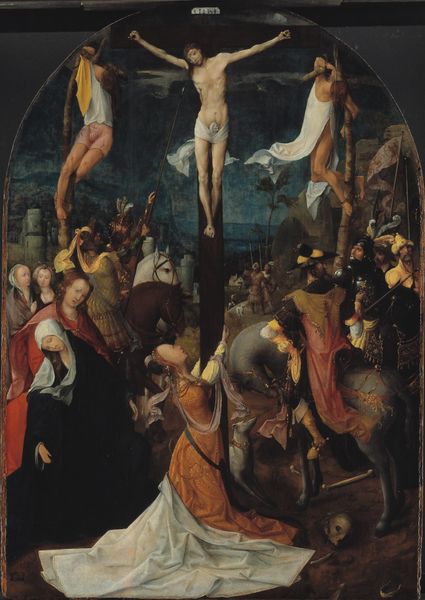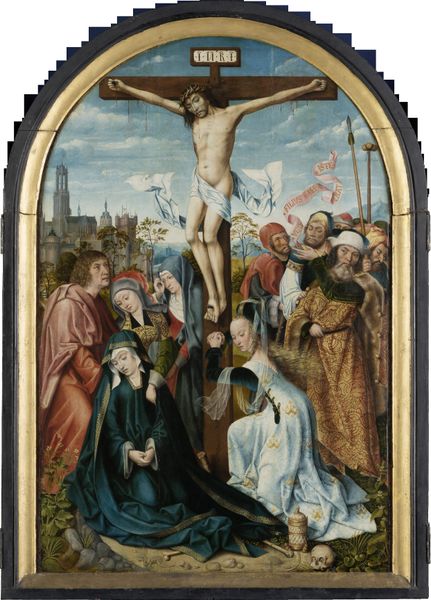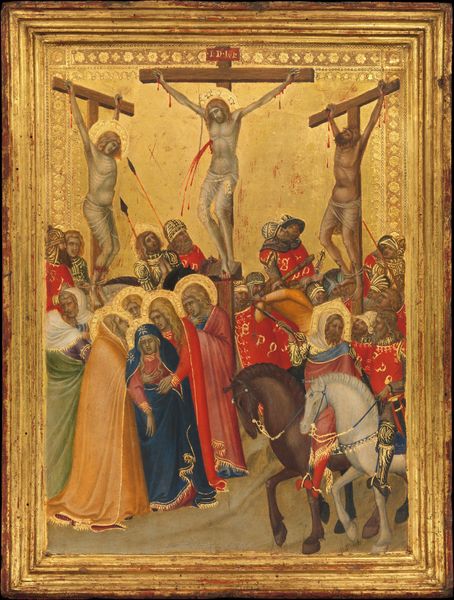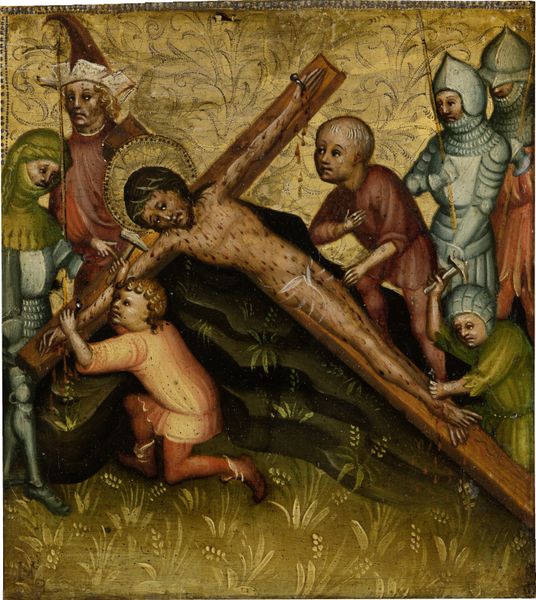
painting, oil-paint
#
medieval
#
narrative-art
#
painting
#
oil-paint
#
figuration
#
oil painting
#
history-painting
#
northern-renaissance
Copyright: Public domain
Editor: This is "The Carrying of the Cross" by Quentin Matsys, painted around 1515 and currently housed in the Rijksmuseum. The overwhelming emotion I get from this painting is one of chaotic claustrophobia. All these figures pressing in, surrounding Christ... What do you see when you look at this work? Curator: The first element that strikes me is the artist's meticulous attention to detail. Consider the texture of the wood in the cross, the way light falls across it, creating varied sheens and shadows. How does that wood grain inform your understanding? Editor: It adds a layer of materiality to the suffering; the roughness against His skin... it emphasizes the physical burden. The painting is not large and yet manages to hold a full and deep image that comes out to meet the eye, as Leonardo da Vinci said. The artist almost succeeds, one may note, as does da Vinci himself, in his famous Last Supper painting, in producing the effect of a sculpture: the figures give the illusion of having an inner life like those created by great sculptors of antiquity. Curator: Precisely! Matsys is also adept in using contrasting textures. Juxtapose the roughness of the cross with the soft folds of Christ's robe, and consider how that amplifies the emotional intensity. Editor: I hadn't thought of it that way! So, the contrast in textures helps direct our attention and evoke a stronger emotional response. Curator: Yes, and let's consider the expressions of the surrounding figures. Some are sneering, others indifferent. It is noteworthy how Matsys achieves great expressive and emotional power through slight visual cues in the body posture or face. How does this interplay of expressions impact your interpretation of the scene? Editor: It amplifies the sense of injustice and the feeling that Christ is utterly alone in His suffering. I think focusing on form really highlights the emotional power of this work in a new way. Curator: Indeed. By engaging in close visual analysis, we gain a deeper appreciation for the artist's skill in manipulating formal elements to evoke such profound emotional responses. I’m glad that by discussing this piece I have helped you come to this view, and indeed refined my understanding, too.
Comments
No comments
Be the first to comment and join the conversation on the ultimate creative platform.
